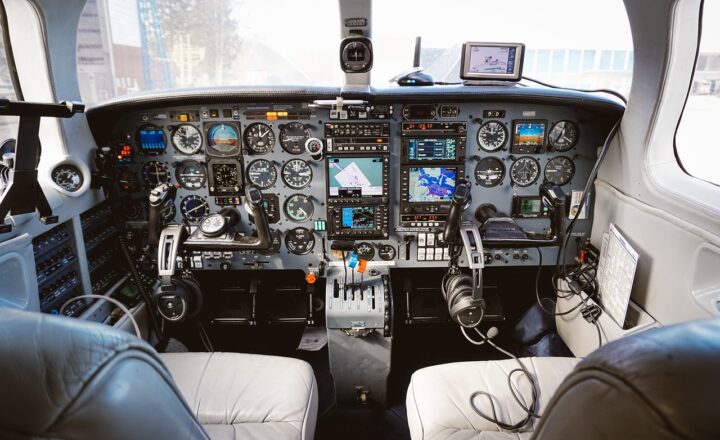The Surprising Role of Small Airports in Keeping Remote Communities Connected
November 11, 2024

Often overshadowed by major international hubs, small airports play a crucial role in connecting remote communities to the rest of the world. These regional airfields serve as lifelines, providing essential transportation links that support local economies, facilitate tourism, and ensure access to vital services. In this article, we will explore how small airports are adapting in today’s economy, their impact on local communities, and the future of regional aviation.
1. Understanding the Importance of Small Airports
Small airports are often the most efficient means of travel for remote or isolated regions. Without these gateways, residents might be forced to travel long distances by road, which can be impractical or even impossible in areas with harsh terrains or extreme weather. Here are several key aspects of why small airports are important:
- Economic Growth: Small airports contribute to local economies by facilitating business travel and attracting tourists. They serve as connecting points for regional airlines, promoting trade and generating jobs in surrounding communities.
- Accessibility: For communities far from urban centers, small airports provide access to vital services such as healthcare and education, which might otherwise be challenging to reach.
- Emergency Services: Small airports play a significant role in providing emergency services, such as medical evacuations or disaster response, making them essential for community safety and preparedness.
2. Economic Impact on Remote Communities
The presence of a small airport can significantly influence the economic landscape of remote areas. Let’s delve deeper into these impacts:
- Job Creation: Local airports directly create jobs through airport operations, while also encouraging job growth in ancillary areas such as hospitality, retail, and services. A small airport can lead to an increase in local employment opportunities that might otherwise be minimal in remote regions.
- Tourism Development: With air connectivity, remote communities can become more appealing tourist destinations. Small airports enable easy access to stunning locales, adventure tourism, and cultural experiences, thereby attracting visitors and fostering local businesses such as hotels, restaurants, and shops.
- Support for Local Industries: Industries such as agriculture, fishing, and forestry often rely on small airports to ship their products to broader markets. This direct access can enhance the economic viability of these industries and promote sustainable practices through the export of regional specialty goods.
3. Challenges Facing Small Airports
While small airports provide invaluable services to remote communities, they face several challenges:
- Funding and Investment: Smaller airports may struggle to obtain the necessary funding for maintenance and expansion projects. Unlike larger airports that attract significant investments, small airports often operate on limited budgets, requiring innovative solutions to secure funding.
- Regulatory Hurdles: Navigating the regulatory landscape can be cumbersome for small airports, particularly regarding safety and operational guidelines. Compliance with federal regulations can impose additional financial burdens on these facilities.
- Competition from Larger Airports: Major airports offer more flight options and lower prices due to economies of scale. This competition can draw potential passengers away from small airports, threatening their financial sustainability and relevance.
4. Innovations and Solutions
To address these challenges, small airports are embracing innovation and creative strategies:
- Community Partnerships: Many small airports are collaborating with local governments, businesses, and organizations to develop strategic plans that promote airport use and enhance services. These partnerships often broaden the airport’s impact on local communities by leveraging collective resources and interests.
- Leveraging Technology: Incorporating technology such as online booking systems, mobile apps, and enhanced customer service platforms can improve the passenger experience and attract more travelers. Airports are also exploring the use of drones for deliveries and medical services, further extending their operational reach.
- Sustainability Initiatives: Adopting environmentally sustainable practices, such as utilizing renewable energy sources, can not only reduce operational costs but also promote a positive image for small airports. By becoming leaders in sustainability, these airports can attract funding and support from environmentally-conscious stakeholders.
5. The Future of Small Airports
In an age where connectivity is paramount, the future of small airports looks promising but requires adaptability. Trends shaping their evolution include:
- Increased Demand for Regional Travel: As people seek faster and more efficient travel options, regional flights are becoming more popular. Small airports positioned to cater to this demand will play an integral role in enhancing connectivity for remote communities.
- Tourism Growth: With many travelers opting for unique, less populated destinations, small airports can take advantage of this trend to draw in tourists seeking authentic experiences. The promotion of local culture and nature-based tourism can thrive through such airports, benefiting remote areas economically and socially.
- Technological Integration: The incorporation of cutting-edge technology to streamline operations and enhance customer experience will greatly benefit small airports. Integrating advanced safety systems, passenger processing technologies, and eco-friendly practices will be essential to their future success.
Conclusion
Small airports are more than just landing strips; they are vital infrastructures that connect remote communities with the world. By continually adapting to modern challenges and leveraging their unique positions, these regional hubs can provide remarkable benefits, ensuring that even the most isolated communities remain connected and vibrant. As we look forward to the future, nurturing and supporting our small airports will be crucial in maintaining the rich tapestry of local cultures and economies.
This hidden yet significant role of small airports deserves recognition and appreciation in our increasingly connected world.







